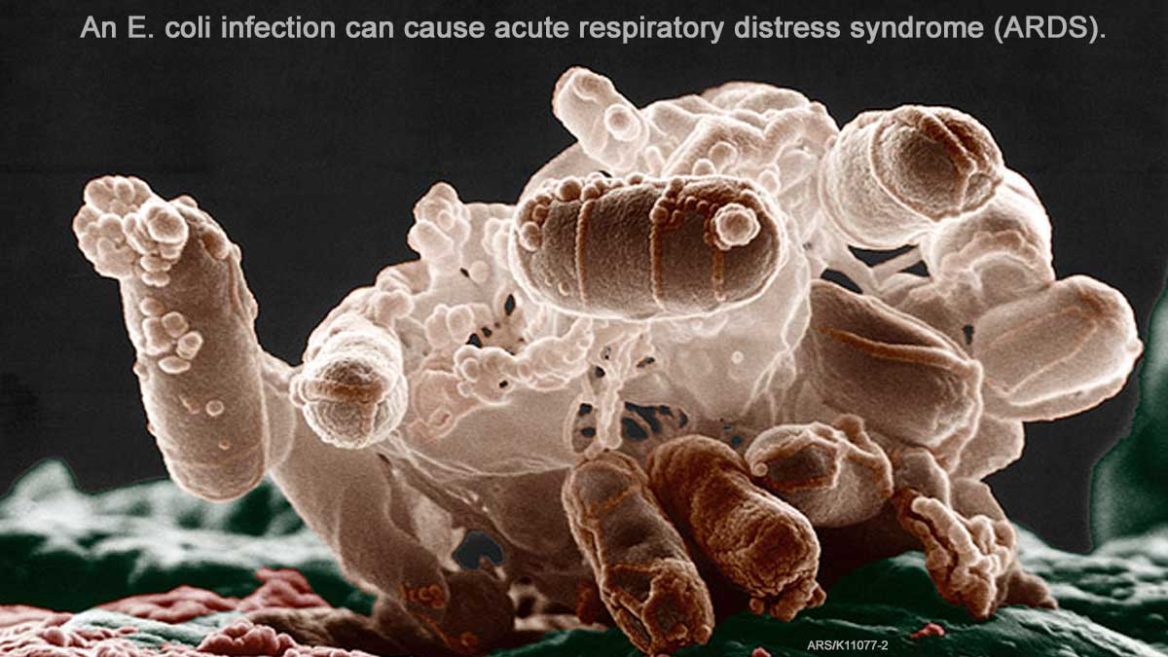An E. coli infection can lead to to acute respiratory distress syndrome (ARDS), which is severe lung injury requiring mechanical ventilation. When this happens, the risk of dying is extremely high, particularly because E. coli kidney failure and damage to other organs often accompany this condition.
If the patient lives, hospitalization and rehabilitation can be months long. In addition, patients almost always suffer permanent physical, mental, and emotional damage.
Tragically, many of these patients do not survive. A family is left to grieve the loss, all because a company sold food that was contaminated with E. coli bacteria. You can use the form below to contact our E. coli lawyers for help.
How Does an E. coli Infection Cause Acute Respiratory Distress Syndrome?
Acute respiratory distress syndrome is a response of the lungs to damage done by toxins created by E. coli O157 and other pathogenic strains of this deadly bacteria. The damage includes pulmonary edema (swelling of the lungs caused by excess fluid) and hypoxemia (low oxygen).
An E. coli patient can experience ARDS as a result of sepsis, which is an extreme response by the body to the E. coli infection. With sepsis, tissue and organs throughout the body become inflamed. This can include the lungs.
The mortality rate for ARDS is extremely high, about 50%. However, our lawyers have had clients who survived. We want family members of people with ARDS to have hope their loved one will survive.
E. coli poisoning is preventable. Food companies can prevent contamination by keeping processing plants and other facilities clean, and testing can be done prior to sale to make sure products are not contaminated. Businesses and fairs with petting zoos can keep the environment clean, warn people of the danger of contact with animals known to spread disease (cows, goats, llamas), and provide hand washing stations with soap and warm water.
Complications of ARDS
Complications include those associated with mechanical ventilation:
- tracheal stenosis, vocal cord dysfunction
- ventilator-associated pneumonia
- stress-related gastrointestinal hemorrhage
- cardiac arrhythmias
- myocardial dysfunction
- barotrauma (pneumothorax, pneumomediastinum, pneumoperitoneum, air embolism)
- hypotension
- mechanical damage from central line placement.1,2
These complications can be accompanied by a kind of kidney failure called hemolytic uremic syndrome (HUS), the leading cause of kidney (renal) failure in children in the United States. A child with ARDS and HUS is at higher risk of wrongful death from the E. coli infection.
Resources: 1. Russell, James and Walley, Keith, Acute Respiratory Distress Syndrome, Cambridge University Press (1999), p. 257.
2. Mortelliti, M.D., Michael and Manning, M.D., Harold, Acute Respiratory Distress Syndrome, American Family Physician (May 2002) 65(9):1823-1831.
Additional Information
- E. coli-HUS Lawyers and Lawsuit
- Central Nervous System Damage
- Children and Kidney Failure
- E. coli and Brain Damage
- Coma
- E. coli and HUS Kidney Failure Treatment
- Encephalopathy
- Heart Problems
- Hemolytic Anemia
- Pancreatitis
- Seizures
- HUS-TTP Lawsuit Settlement
- Respiratory Distress Syndrome, ARDS
- Stroke from E. coli and Hemolytic Uremic Syndrome

